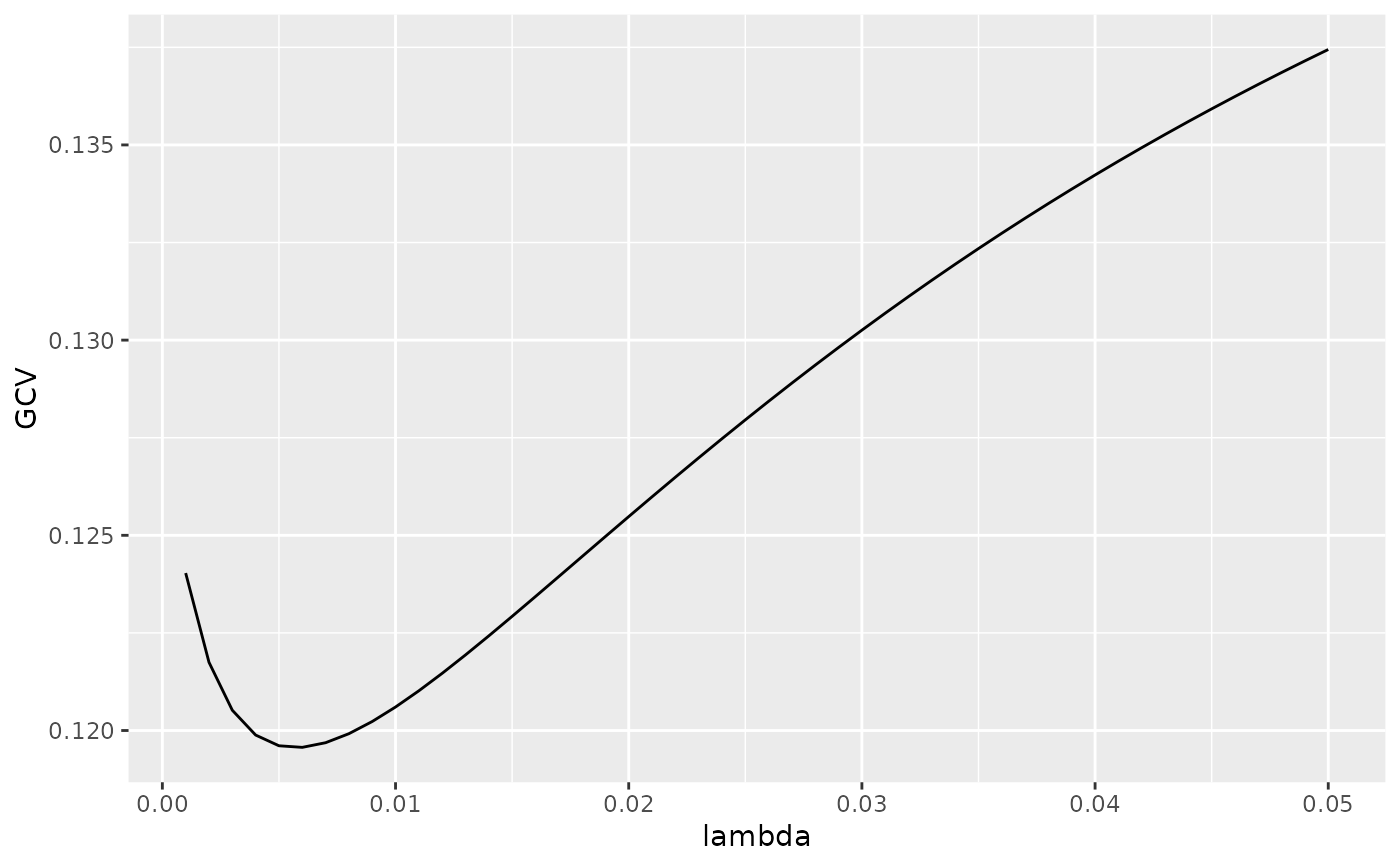Glance accepts a model object and returns a tibble::tibble()
with exactly one row of model summaries. The summaries are typically
goodness of fit measures, p-values for hypothesis tests on residuals,
or model convergence information.
Glance never returns information from the original call to the modeling function. This includes the name of the modeling function or any arguments passed to the modeling function.
Glance does not calculate summary measures. Rather, it farms out these
computations to appropriate methods and gathers the results together.
Sometimes a goodness of fit measure will be undefined. In these cases
the measure will be reported as NA.
Glance returns the same number of columns regardless of whether the
model matrix is rank-deficient or not. If so, entries in columns
that no longer have a well-defined value are filled in with an NA
of the appropriate type.
Usage
# S3 method for class 'ridgelm'
glance(x, ...)Arguments
- x
A
ridgelmobject returned fromMASS::lm.ridge().- ...
Additional arguments. Not used. Needed to match generic signature only. Cautionary note: Misspelled arguments will be absorbed in
..., where they will be ignored. If the misspelled argument has a default value, the default value will be used. For example, if you passconf.lvel = 0.9, all computation will proceed usingconf.level = 0.95. Two exceptions here are:
See also
glance(), MASS::select.ridgelm(), MASS::lm.ridge()
Other ridgelm tidiers:
tidy.ridgelm()
Value
A tibble::tibble() with exactly one row and columns:
- kHKB
modified HKB estimate of the ridge constant
- kLW
modified L-W estimate of the ridge constant
- lambdaGCV
choice of lambda that minimizes GCV
Examples
# load libraries for models and data
library(MASS)
names(longley)[1] <- "y"
# fit model and summarizd results
fit1 <- lm.ridge(y ~ ., longley)
tidy(fit1)
#> # A tibble: 6 × 5
#> lambda GCV term estimate scale
#> <dbl> <dbl> <chr> <dbl> <dbl>
#> 1 0 0.128 GNP 25.4 96.2
#> 2 0 0.128 Unemployed 3.30 90.5
#> 3 0 0.128 Armed.Forces 0.752 67.4
#> 4 0 0.128 Population -11.7 6.74
#> 5 0 0.128 Year -6.54 4.61
#> 6 0 0.128 Employed 0.786 3.40
fit2 <- lm.ridge(y ~ ., longley, lambda = seq(0.001, .05, .001))
td2 <- tidy(fit2)
g2 <- glance(fit2)
# coefficient plot
library(ggplot2)
ggplot(td2, aes(lambda, estimate, color = term)) +
geom_line()
 # GCV plot
ggplot(td2, aes(lambda, GCV)) +
geom_line()
# GCV plot
ggplot(td2, aes(lambda, GCV)) +
geom_line()
 # add line for the GCV minimizing estimate
ggplot(td2, aes(lambda, GCV)) +
geom_line() +
geom_vline(xintercept = g2$lambdaGCV, col = "red", lty = 2)
# add line for the GCV minimizing estimate
ggplot(td2, aes(lambda, GCV)) +
geom_line() +
geom_vline(xintercept = g2$lambdaGCV, col = "red", lty = 2)

